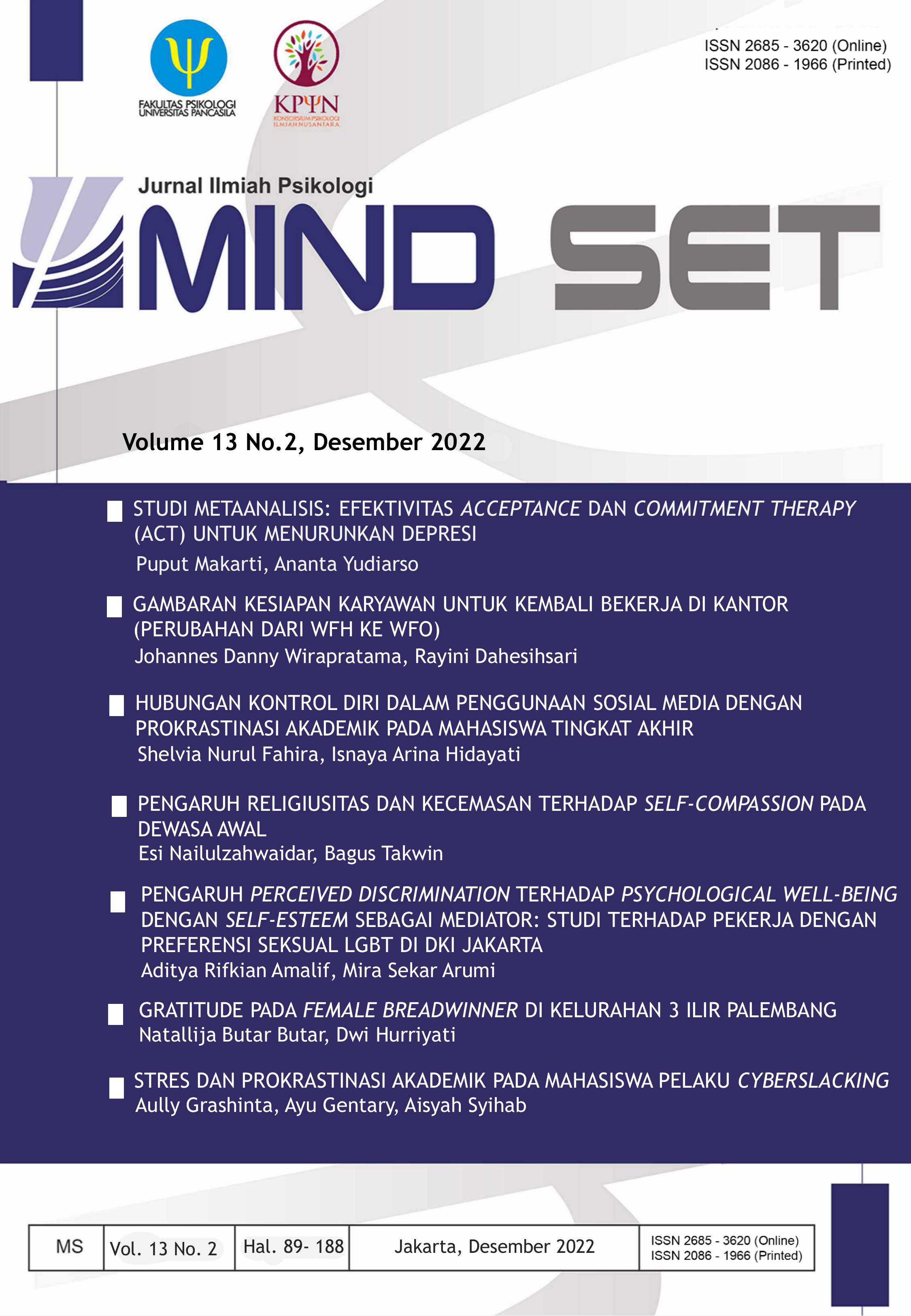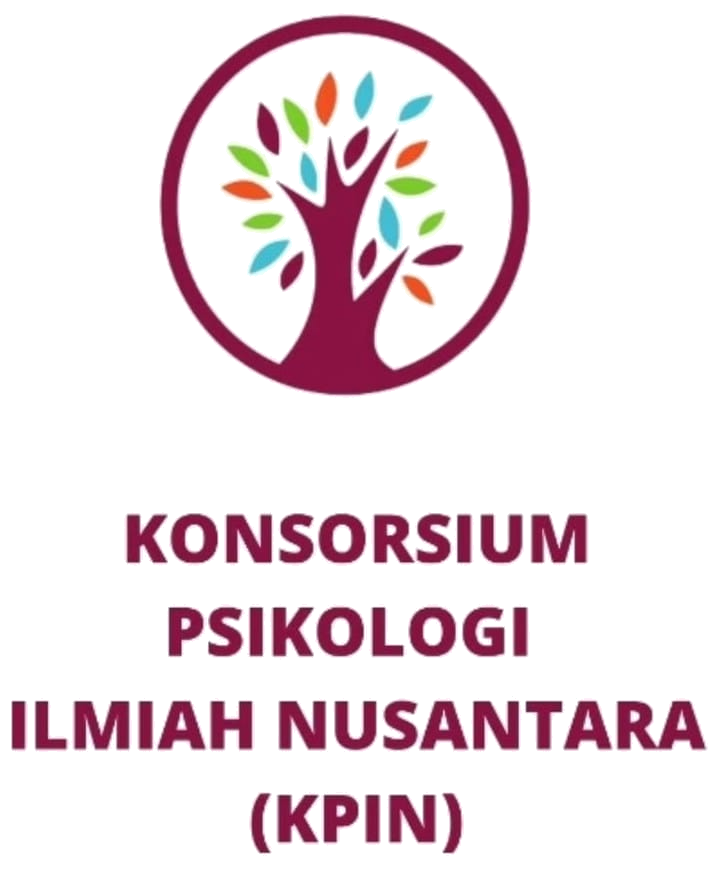Gambaran Kesiapan Karyawan untuk Kembali Bekerja di Kantor: Perubahan dari WFH ke WFO
DOI:
https://doi.org/10.35814/mindset.v13i02.3773Keywords:
COVID-19 pandemic, readiness for change, returning to the office, work from home, work from officeAbstract
After almost 2 years of COVID-19 pandemic hits Indonesia, Work From Home (WFH) has been applied as the new way of working and the employees have now already adapted with WFH. However, in this new normal era, employees are expected to return to the office as in Work From Office (WFO) and it turns out most of them are not ready. This study aimed to describe employee’s readiness to return to the office. This study uses the concept of readiness for change. This study collected 200 participants that are working from home during the pandemic. Using 21 items of readiness for returning to the office questionnaire, consisting 4 dimensions, which are appropriateness, change specific efficacy, management support, and personal valance. Descriptive statistics were applied for data analysis. The findings showed that, in general, participants are showing the readiness for returning to the office. If viewed from all four dimensions, it shows that they’re ready to return to the office; however appropriateness and personal valance dimension could be optimized by increasing employee’s awareness the importance of returning to the office. In addition, there was a significant difference for participants on the line of work groups, tenure, salary, employee’s performance during WFH, and how long they had been working from home.
References
Bailey, J.R. (2021). This is how each generation is feeling about returning in the office. Fastcompany.com. Ditemu kembali dari https://www.fastcompany.com/90673558/this-is-how-each-generation-is-feeling-about-returning-to-the-office
Bartik, A., Bertrand, M., Cullen, Z., Glaeser, E. L., Luca, M., & Stanton, C. (2020). How are Small businesses adjusting to COVID-19? Early evidence from a survey. SSRN Electronic Journal, 20(12), 1-36.Burns, N. & Groove, S. K. (2005). The practice of nursing researchL Conduct, critique, and utilization. (5th ed.). St. Louis: Elsevier Saunders.
BBC. (2021). Some companies want staff back in the office for more time than employees had anticipated. Workers like their set-ups, and even doubt bosses' motives – so they're resisting. https://www.bbc.com/worklife/article/20210618-the-workers-pushing-back-on-the-return-to-the-office (diakses pada: 8 April 2022).
Creswell, J. (2012). Educational Research (4th ed.). Pearson.
Cummings, T. G., & Worley, C. G. (2015). Organization development & change (10th ed.) Cengage Learning.
Deloitte. (2021). 2021 Return to workplace survey. https://www2.deloitte.com/us/en/pages/human-capital/articles/2021-return-to-workplace-survey.html (diakses pada: 9 November 2021)
Dingel, J. I., & Neiman, B. (2020). How many jobs can be done at home? Journal of Public Economics, 189(1), 104-235.
Donthu, N., & Gustafsson, A. (2020). Effects of COVID-19 on business and research. Journal of Business Research, 117(1), 284–289.
Forbes. (2021). The Real Reason To Go Back To The Office (Hint: It’s Not For Your Employer). https://www.forbes.com/sites/tracybrower/2021/07/11/the-real-reason-to-go-back-to-the-office-hint-its-not-for-your-employer/?sh=6125e2ab17ca (diakses pada: 4 Maret 2022)
Future Forum Pulse (April 19, 2022), https://futureforum.com/pulse-survey/
Gigantesco, A. (2003). Job satisfaction among mental health professionals in Rome, Italy. Community Mental Health Journal, 39(4), 349-55.
Gregersen, H. B. (1993). Multiple commitments at work and extrarole behavior during three stages of organizational tenure. Journal of Business Research, 26(1), 31–47. https://doi.org/10.1016/0148-2963(93)90041-M
Harvard Business Review. (2020). How to prepare yourself for a return to the office. https://hbr.org/2020/07/how-to-prepare-yourself-for-a-return-to-the-office (diakses pada: 4 November 2021)
Harmoko. (2012). Asuhan Keperawatan Keluarga. Yogyakarta: Pustaka Pelajar
Hartono, A.K., & Rahadi, D.R. (2021). Work From Home terhadap Kinerja Karyawan pada Masa Pandemi Covid-19. Jurnal Manajemen Bisnis. 18(1), 16-21.
Holt, D. T. (2003). Readiness for change: The development of a scale. Dissertation. Auburn University.
Holt, D. T., Armenakis, A. A., Field, H. S., & Harris, S. G. (2007). Readiness for organizational change: The systematic development of a scale. Journal of Applied Behavioral Science, 43(2), 232-255. https://doi.org/10.1177/0021886306295295
Ivancevich, J. M., Konopaske, R., & Matteson, M. T. (2014). Organizational, Behavior & Management (10th ed.). New York: McGraw-Hill Companies.
Jones, R. A., Jimmieson, N. L., & Griffiths, A. (2005). The impact of organizational culture and reshaping capabilities on change implementation success: The mediating role of readiness for change. Journal of Management Studies, 42, 361-386.
Kartika, L., Jayawinangun, R., & Indrawan, R. D. (2021). Efektifitas program work from home (WFH) berbasis outcome masa pandemi covid-19. Journal of Applied Business and Economics (JABE), 7(3). 338-356.
Malayuja, J., Sahputra, N., & Alfirah. (2022). Pengaruh work from home dan fleksibilitas jam kerja terhadap kinerja pegawai pada direktorat jenderal pajak di kpp pratama lubuk pakam. Prosiding Fakultas Ekonomi dan Bisnis, Universitas Dharmawangsa. 32-37.
Mustomi, D., Adawia, P. R., Wijayanti, D., Ulum, K., & Arfian, A. (2021). Analisis work from home terhadap motivasi kerja karyawan di masa pandemi Covid-19. Jurnal Manajemen Sumber Daya Manusia, Administrasi dan Pelayanan Publik Sekolah Tinggi Ilmu Administrasi Bina Taruna Gorontalo, 8(2), 18-31.
Nicola, M., Alsafi, Z., Sahrabi, C., Kerwan, A., Al-Jabir, A., Iosifidis, C., Agha, M., & Agha, R. (2020). The socio-economic implications of the coronavirus pandemic (COVID-19): A review. International Journal of Surgery, 78(1), 185-193.
Orridge, M. (2012). Change Leadership: Developing a Change-Adept Organization. Ashgate Publishing Limited.
Palmer, I., Dunford, R., & Buchanan, D. A. (2017). Managing Organizational Change (3rd ed.). McGraw-Hill Education.
Robbins, S. P., & Judge, T. A. (2017). Organizational behavior (17th ed.). Pearson.
Smither, R., Houston, J., & McIntire, S. (2016). Organizational Development: Strategies for Changing Environments (2nd ed.). New York: Routledge.
Sohrabi, C., Alsafi, Z., O’Neill, N., Khan, M., Kerwan, A., Al- Jabir, A., Iosifidis, C., & Agha, R. (2020). World Health Organization declares global emergency: A review of the 2019 novel coronavirus (COVID-19). International Journal of Surgery, 76(1), 71-76.
Tusl, M., Brauchli, R., Kerksieck, O., & Bauer, G.F. (2021). Impact of the covid-19 crisis on work and private life, mental well-being, and self-rated health in german and swiss employees: a cross-sectional online survey. BMC Public Health, 21(741), 1-15. https://doi.org/10.1186/s12889-021-10788-8
Weiner, B. J. (2009). A theory of organizational readiness for change. Implementation Science, 4(67). https://doi.org/10.1186/1748-5908-4-67
Weiner, B. J., Amich, H., & Lee, S. Y. D. (2008). Conceptualization and measurement of organizational readiness for change: A review of the literarture in health service research and other fields. Medical Care Research and Review, 65(4), 379-436. https://doi.org/10.1177/1077558708317802












